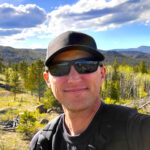
Chris Juszak | https://www.linkedin.com/in/juszak/
Summary
I have a bachelor’s degree in computer science and a master’s degree in systems engineering. I’ve worked in the defense industry since 2002 in various engineering roles. I started in this industry as a government computer scientist for NAVAIR, then worked for defense contractors since 2005 in various roles centered on software engineering, systems engineering, user support, and team leadership. I have experience in military test and evaluation (T&E), infrastructure support, and user support, combined with systems and software engineering skills.
I currently work for KBR, supporting the DoD’s Test Resource Management Center (TRMC). TRMC provides infrastructure and technology support for US military T&E organizations (infrastructure, networks, and software used by military ranges and facilities). My role is to support these organizations as a software/systems engineer with subject matter expertise in integrating live, virtual, and constructive (LVC) systems, and communication interface modeling design and development. I have supported TRMC since 2007 (working for three different contractors – starting with BAE, then Wyle in 2013, which was acquired by KBR in 2016).
I have provided training for communication interface design and implementation to hundreds of defense industry software developers across dozens of US government organizations and companies and I have led engineering teams in the development and support of software products.
Experience
Systems Engineer, Wyle / KBR Inc., September 2013 – present
- Provided training and engineering support to DoD teams integrating distributed communication software for simulation and instrumentation systems, contributing to the expansion of TENA across the DoD and growth of TRMC and its support team
- Led a team developing software products using C++ and Qt on Windows and Linux based systems, resulting in a collection of specialized tools used by DoD software engineers
- Provided expertise in DoD distributed T&E capabilities and software communication data modeling and interface development, contributing to the development of various systems across the DoD
Software Engineer, BAE Systems, October 2007 – September 2013
- Provided engineering support to help establish the Joint Mission Environment Test Capability (JMETC), contributing to the growth of an internationally distributed T&E infrastructure that supports dozens of distributed DoD projects each year
- Developed an internationally distributed network performance testing and reporting system using Red Hat Linux and Python, resulting in a capability that is utilized every day in support of T&E activities
- Developed a Linux-based bootable disk used for network testing and troubleshooting, resulting in a capability that addresses unique DoD performance testing and security related requirements
Software Engineer, Cubic Applications, April 2005 – September 2007
- Led a software team that integrated sensors into a military training system, built network protocol translation capabilities, and developed distributed testing software
- Provided expertise in the integration of software communication libraries
Computer Scientist, Naval Air Systems Command, July 2002 to April 2005
- Developed a web-based distributed system monitoring capability using Red Hat Linux, Apache, MySQL, PHP, and C++, resulting in greater system health visibility during nationally distributed military training exercises
Education
- Master of Engineering, Systems Engineering, 2014, GPA: 4.0, Colorado State University
- Bachelor of Science, Computer Science, 2000, GPA: 3.661, California State University
Skills
- Leadership: Engineering team leadership (product development and support)
- Architecture: Distributed LVC systems communications, interface modeling, design, and implementation
- Engineering: Software development (using C++ and other programming languages)
For some information about my personal life, please see my about page.